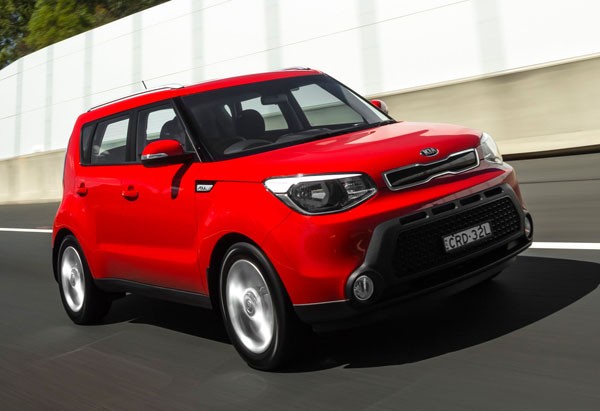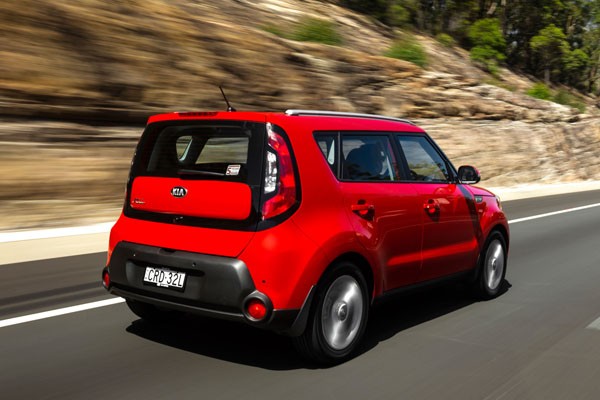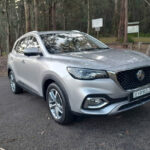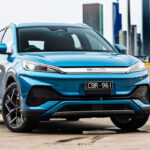
At the risk of sounding old fashioned, when the Kia Soul first came out it was often called the kooky Kia. With its building-block body shape, offbeat colours and design options it had facets of a kid’s toy.
Not any more. The second generation Soul has more body, more substance and, in fact, has become more grown-up without losing its indie edge. Gone are the much criticised cheap plastic interior and ragged ride.
In their place are a quieter cabin, higher quality materials, increased space for occupants and their luggage, plus the new range of premium features, all for a manageable $3000 increase on the previous model’s starting price of $20,990.
Built in South Korea, the Kia Soul comes to Australia one wide-ranging specification level – Soul Si – with 2.0-litre petrol power and the choice of manual or automatic transmission.

Not one exterior body panel has been carried over from the first-generation model. It sits on an all-new platform with a stronger body and upgraded suspension to give refined driving dynamics and pretty good ride comfort.
STYLING
Kia called on its California design centre to shape the new Soul, which it did well without losing key elements of the original design. The Track’ster concept was the result. (Love it or hate it, Kia’s weird treatment of punctuation is certainly entertaining!)
The new Soul front retains the Kia signature ‘tiger nose’ grille, but increased length and width have given the body a more assertive stance.

Height has been reduced, and with smoother exterior panels, helps shave the co-efficient of friction from Cd 0.35 to 0.34. A longer wheelbase by 20 mm makes more room for occupants and cargo.
A wider tailgate makes easier access to the rear, while under-floor storage compartments can allow damp or dirty gear to be kept away from the main cargo area.
Soft-touch surfaces add a premium feel to the cabin interior, while serviceable quality dark fabric upholstery is given a lift by contrasting light coloured stitching. All in all, it’s an edgy interior with mature overtones.
INFOTAINMENT
Circles, a key theme of the Track’ster interior are mirrored in the Soul’s instrument panel with deep-set circular gauges and centre console gearshift surround.
Front door-mounted audio speakers and high-mounted tower-type tweeters on the outer edges of the dash follow suit and steering wheel-mounted controls are placed in circular groupings along the horizontal spokes with audio and cruise control buttons readily at hand for the thumbs.
Bluetooth, as in most vehicles these days, is a given.
ENGINES / TRANSMISSIONS
The Australian version of the Soul comes with one petrol engine linked to either a six-speed manual or six-speed automatic transmission. The 113 kW 2.0-litre petrol engine produces peak torque of 191 Nm at 4700rpm.
Cast aluminium cylinder blocks, aluminium cylinder heads and a plastic variable intake manifold save weight, while an offset crankshaft reduces friction. A low-noise timing chain and mechanical lash adjustment make further efficiency gains.
SAFETY
With occupant protection taking an ever increasing role in vehicle design, Soul safety is no exception. Active features include Electronic Stability Control, Vehicle Stability Management and Hill Start Assist, reversing camera and rear parking sensors.
Passive protection includes front seatbelts fitted with pre-tensioners, and six airbags – dual front airbags, front-side airbags and side curtain airbags, offering head protection to both front seat and rear seat occupants as standard.
All models come with the convenience of cruise control.
DRIVING
The test vehicle was fitted with the six-speed automatic transmission which enabled the switch between two operating modes – fully automatic or Sport, the latter allowing the driver to get in on the action with manual gear shifts.
The Soul is not the kind of car that benefits from playing ‘Sport’. There’s no adrenalin rush here, just smooth efficiency.
Lightweight mechanicals and optimum gearing of the six-speed auto had the test vehicle coming up with highly competitive fuel consumption of 6.5 litres per 100 kilometres on the motorway and the order of 10 litres per 100 kilometres scuttling around the suburbs.
During the day the paint – Acid Green – attracted comments from both ends of the desirability spectrum. At night, the super-size rear lamp clusters had the Soul lit up like the Harbour Bridge on New Year’s Eve.
SUMMING UP
Soul fans are well catered for with design giving a big nod to the original, while new chums could be attracted to the latest model by its swag of goodies, better quality finish and more refined on-road performance than before.
AT A GLANCE
MODEL RANGE
Kia Soul Si 2.0-litre petrol five-door hatch: $23,990 (manual), $25,990 (automatic)
Note: These prices do not include government or dealer delivery charges. Contact your local Kia dealer for drive-away prices.
FEATURES (All standard)
Electronic Stability Control
ABS anti-lock brakes with Brake Assist
Hill Start Assist
Vehicle Stability Management
Tyre Pressure Monitoring System
MDPS steering with FlexSteer
Six airbags (front, side and curtain)
Cruise Control
Reversing Camera
Rear Parking Sensors
Bluetooth
SPECIFICATIONS (Kia Soul Si 2-litre petrol engine)
Capacity: 1.999 litres
Configuration: In-line 4-cylinder, 16-valve, DOHC MPI1 D-CVVT2
Bore x Stroke: 81.0 mm x 97.0 mm
Compression Ratio: 10.3:1
Maximum Power: 113 kW @ 6200 rpm
Maximum Torque: 191 Nm @ 4700 rpm
DRIVELINE:
Transmission: Six-speed manual / Six-speed automatic
DIMENSIONS, WEIGHT AND CAPACITIES:
Length: 4140 mm
Width: 1800 mm
Height: 1619 mm (with roof rails)
Wheelbase: 2570 mm
Minimum ground clearance: 150 mm
Kerb weight: 1335 kg / 1405 kg
Gross weight limit: 1770 kg / 1840 kg
Cargo capacity with under floor tray: 238 litres; 878 litres (rear seat folded)
Fuel Tank Capacity: 54 litres
Towing capacity: 550 kg (unbraked); 1300 kg / 1100 kg (braked)
Maximum towball download: 130 kg
Turning circle: 10.6 m
Drag co-efficient, Cd: 0.34
SUSPENSION AND BRAKES:
Suspension: McPherson strut (front); Coupled torsion beam axle
Brakes: Ventilated discs (front); solid discs (rear)
Steering: Electric power steering (FlexSteer)
Wheels: 17in alloy
Tyres: 215/55 R17. Temporary spare
PERFORMANCE
Acceleration 0 to 100 km/h: N/A
Top speed: N/A
FUEL CONSUMPTION:
Fuel type: Regular unleaded, E10 compatible
Combined Cycle (ADR 81/01): 7.6 / 8.4 litres per 100 km. CO2 emissions 178 / 195 g / km
Emissions: Euro V
GREEN VEHICLE GUIDE RATINGS:
Greenhouse Rating: 6.5/10
Air Pollution Rating: 7.5/10
STANDARD WARRANTY:
Five years / unlimited kilometres











